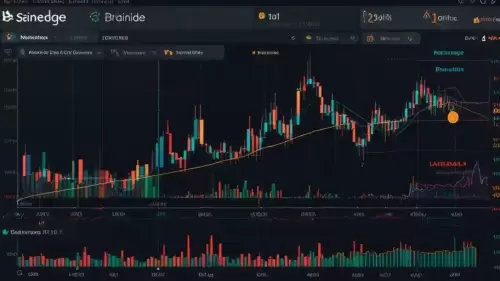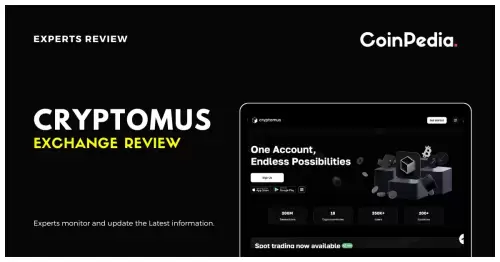 |
|
 |
|
 |
|
 |
|
 |
|
 |
|
 |
|
 |
|
 |
|
 |
|
 |
|
 |
|
 |
|
 |
|
 |
|
オンチェーンで何が起こっているのかを見ると、世界の終わりが来ているように感じることができます。 AIが暗号通貨に取って代わりました

If you've been following crypto trends closely, you might feel like the world is ending. Or maybe AI has taken over as the hotter space. Both statements have some truth, but it's best to look at the problem from a broader perspective.
暗号のトレンドを密接にフォローしている場合、世界が終わっているように感じるかもしれません。または、AIがより暑いスペースとして引き継がれたのかもしれません。どちらの声明にもいくつかの真実がありますが、より広い観点から問題を見るのが最善です。
This article will follow a common thread in innovation cycles as they reach market fit. Today's story will highlight the commonalities between Uber, Pendle, and EigenLayer to help you dispel pessimistic takes on Twitter and gain a new point of view.
この記事は、市場の適合に到達するにつれて、イノベーションサイクルの共通のスレッドに従います。今日のストーリーは、Uber、Pendle、およびEigenlayerの共通性を強調し、Twitterでの悲観的なテイクを払拭し、新しい視点を獲得するのに役立ちます。
For thousands of years, it was said that humans could not fly. Now, 112 years after the first human flight, we've learned how to catch a rocket returning from space. Innovation seems to be unfolding slowly, over vast periods of time.
何千年もの間、人間は飛ぶことができなかったと言われていました。最初の人間の飛行から112年後、私たちは宇宙から戻ってくるロケットを捕まえる方法を学びました。イノベーションは、広大な期間にわたってゆっくりと展開されているようです。
The real magic of technology isn't in the initial invention, but in the ecosystem that grows around it. Think of it like compound growth, but with innovation instead of money.
テクノロジーの本当の魔法は、最初の発明ではなく、その周りに成長する生態系にあります。複合成長のように考えてください。しかし、お金ではなくイノベーションがあります。
While the first movers who create something new grab the headlines and VC funding, it's often the second wave of builders who unlock the greatest value—those who see untapped potential in the existing foundation. They notice possibilities that others don't.
新しいものを作成する最初の引っ越し業者は、見出しとVCの資金調達を手に入れますが、多くの場合、最大の価値を解き放つビルダーの第2波です。彼らは他の人がそうでない可能性に気づきます。
History is full of innovators who never predicted how their inventions would reshape the world. They simply tried to solve the problems at hand. In the process, they opened up possibilities that far exceeded their initial vision.
歴史は、彼らの発明が世界をどのように再構築するかを決して予測しなかった革新者でいっぱいです。彼らは単に手元の問題を解決しようとしました。その過程で、彼らは最初のビジョンをはるかに超える可能性を開きました。
The best innovations are not destinations, but launch pads for entirely new ecosystems to take off. Today's post will explore how this phenomenon manifests itself in Web3. It starts with the Global Positioning System (GPS) that we use every day, and then traces back to the cryptocurrency space through re-staking and points mechanisms.
最高の革新は目的地ではなく、まったく新しいエコシステムが離陸するための発射パッドです。今日の投稿では、この現象がWeb3でどのように現れるかを探ります。これは、毎日使用するグローバルポジショニングシステム(GPS)から始まり、再ステーキングとポイントメカニズムを通じて暗号通貨スペースに戻ります。
A weekend that changed the Internet
インターネットを変えた週末
The Global Positioning System (GPS) has been pinpointing locations on Earth since its introduction in 1973 by the U.S. military. But Google Maps goes far beyond that, making this raw data accessible, usable, and understandable to billions of people.
グローバルポジショニングシステム(GPS)は、1973年に米軍によって導入されて以来、地球上の場所を特定しています。しかし、Googleマップはそれをはるかに超えており、この生データは何十億人もの人々がアクセスしやすく、使いやすく、理解しやすくしています。
Google Maps began with three strategic acquisitions in late 2004.
Googleマップは、2004年後半に3つの戦略的買収から始まりました。
The first was a small Australian startup named Where 2 Technologies, operating out of a bedroom in Sydney. They developed "Expedition," a C++ desktop application that utilized pre-rendered map tiles for seamless navigation. It offered a superior user experience compared to MapQuest's clunky interface.
1つ目は、シドニーの寝室で運営されている2つのテクノロジーという名前の小さなオーストラリアのスタートアップでした。彼らは、シームレスなナビゲーションに事前にレンダリングされたマップタイルを利用したC ++デスクトップアプリケーション「Expedition」を開発しました。 MapQuestの不格好なインターフェイスと比較して、優れたユーザーエクスペリエンスを提供しました。
Simultaneously, Google acquired Keyhole (satellite imagery technology) and ZipDash (real-time traffic analysis), integrating core components of its mapping vision. Together, these acquisitions formed the foundation of Google Maps: merging interactive navigation, rich visual data, and dynamic information into a single application.
同時に、Googleはキーホール(衛星画像技術)とZipdash(リアルタイムトラフィック分析)を取得し、マッピングビジョンのコアコンポーネントを統合しました。これらの買収は、インタラクティブナビゲーション、豊富な視覚データ、および動的情報を単一のアプリケーションに統合するGoogleマップの基礎を形成しました。
Expedition was a desktop application, but Larry Page, the CEO of Google at the time, insisted on a web-based solution. Initial attempts were slow and uninspired. To resolve this, Bret Taylor, a Stanford graduate and former associate product manager at Google, took it upon himself to fix it.
Expeditionはデスクトップアプリケーションでしたが、当時GoogleのCEOだったLarry PageはWebベースのソリューションを主張していました。最初の試みは遅く、インスピレーションを受けていませんでした。これを解決するために、Stanfordの卒業生であり、Googleの元アソシエイトプロダクトマネージャーであるBret Taylorは、それを修正するためにそれを取りました。
Bret Taylor completely rewrote the entire front end using Asynchronous JavaScript and XML (AJAX). AJAX was a new technology that allowed websites to update content without reloading the entire page. Before AJAX, web applications were static and clunky. But with AJAX, responsiveness rivaled that of desktop software. Maps became draggable, and new tiles loaded without refreshing the page—a revolutionary user experience in 2005.
Bret Taylorは、非同期JavaScriptとXML(Ajax)を使用してフロントエンド全体を完全に書き直しました。 Ajaxは、ページ全体をリロードせずにWebサイトがコンテンツを更新できるようにする新しいテクノロジーでした。 AJAXの前に、Webアプリケーションは静的で不格好でした。しかし、AJAXでは、レスポンディングはデスクトップソフトウェアの応答性に匹敵しました。マップはドラッグ可能になり、2005年の革新的なユーザーエクスペリエンスであるページを更新せずに新しいタイルがロードされました。
The real genius came when Google released its Maps API later that year, transforming it from a product to a platform. Developers could now embed Google Maps and build on top of them, sparking thousands of “mashups” that eventually grew into full businesses. Uber, Airbnb, and DoorDash all exist because Bret Taylor made maps programmable over one fateful weekend.
本当の天才は、Googleがその年の後半にMaps APIをリリースし、それを製品からプラットフォームに変換したときに来ました。開発者は、Googleマップを埋め込み、その上に構築することができ、最終的には完全なビジネスに成長した数千の「マッシュアップ」を引き起こすことができました。 Uber、Airbnb、およびDoordashはすべて、1つの運命の週末にわたってマップをプログラム可能にしたため、すべて存在します。
Bret Taylor's intuition is a recurring phenomenon in technology: the most profound value often comes not from foundations but from what others build on them. These “second-order effects” represent the true magic of innovation—the ability of a single breakthrough to empower an entire ecosystem, spawning unimagined applications.
Bret Taylorの直観は、テクノロジーの繰り返しの現象です。最も深い価値は、多くの場合、基礎からではなく、他の人がそれらに基づいて構築するものからもたらされます。これらの「二次効果」は、イノベーションの真の魔法、つまり単一のブレークスルーの能力を表しており、エコシステム全体に力を与え、想像を絶するアプリケーションを生み出しています。
Once Google Maps became programmable, it set off a chain reaction. Airbnb, DoorDash, Uber, and Zomato were among the first to integrate, placing GPS at the heart of their services. And Pokemon Go went a step further by overlaying augmented reality technology on top of location data, blurring the line between reality and virtuality.
Googleマップがプログラム可能になると、連鎖反応が発生しました。 Airbnb、Doordash、Uber、およびZomatoは、最初に統合した最初の人の1人であり、GPSをサービスの中心に配置しました。ポケモンGOは、ロケーションデータに加えて拡張現実テクノロジーをオーバーレイし、現実と仮想性の境界線を曖昧にすることにより、さらに一歩進んだ。
What's behind all this? Of course, it's payments. Because what good is an on-demand service if payments can't be seamless?
これらすべての背後にあるものは何ですか?もちろん、それは支払いです。支払いがシームレスになれない場合、オンデマンドサービスとは何が良いからですか?
The GPS technology they rely on isn't new. But GPS alone doesn't work miracles. It's the culmination of decades of technological evolution, such as satellite positioning, mobile hardware, AJAX, APIs, and payment channels, all of which were quietly taking place.
彼らが依存しているGPSテクノロジーは新しいものではありません。しかし、GPSだけでは奇跡は機能しません。それは、衛星ポジショニング、モバイルハードウェア、AJAX、API、支払いチャネルなど、数十年にわたる技術の進化の集大成であり、これらはすべて静かに行われていました。
That's why second-order effects are so powerful. They don't get much attention in the present. But one day you look up and see that your daily routine
そのため、二次効果が非常に強力です。彼らは現在、あまり注目を集めていません。しかし、ある日、あなたは見上げて、あなたの日常生活を見る
免責事項:info@kdj.com
提供される情報は取引に関するアドバイスではありません。 kdj.com は、この記事で提供される情報に基づいて行われた投資に対して一切の責任を負いません。暗号通貨は変動性が高いため、十分な調査を行った上で慎重に投資することを強くお勧めします。
このウェブサイトで使用されているコンテンツが著作権を侵害していると思われる場合は、直ちに当社 (info@kdj.com) までご連絡ください。速やかに削除させていただきます。



























































